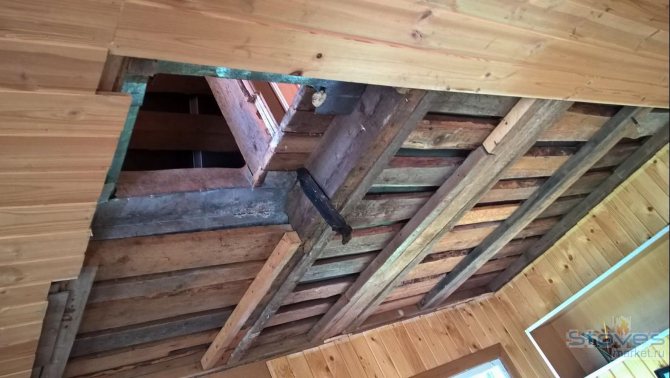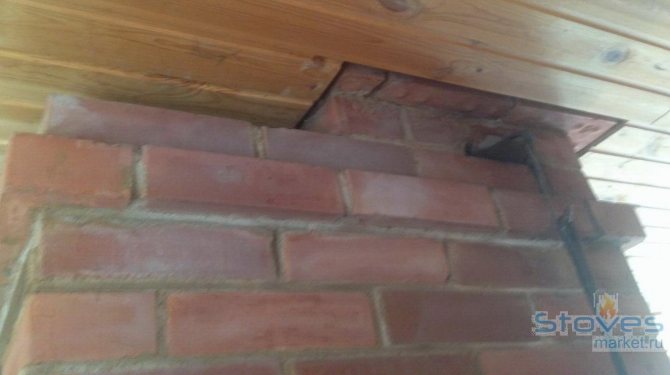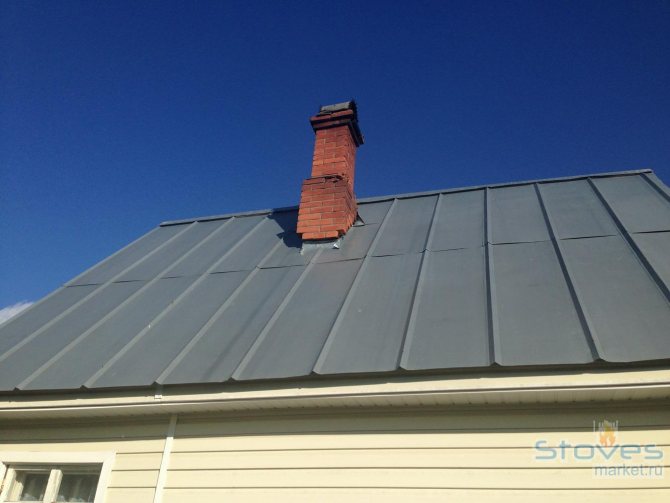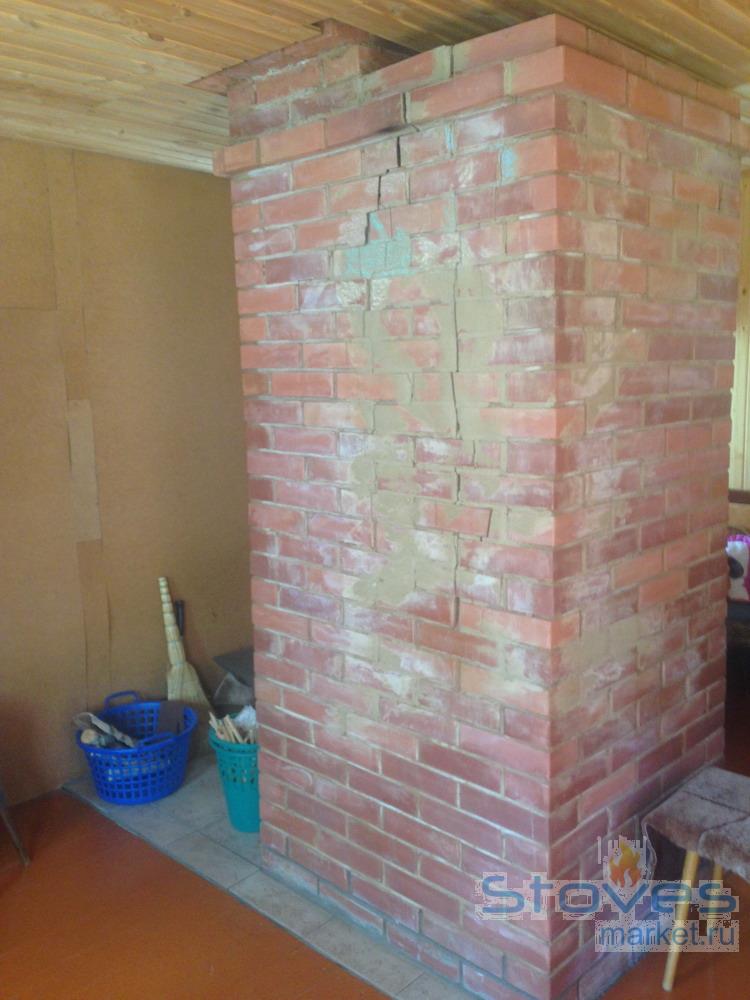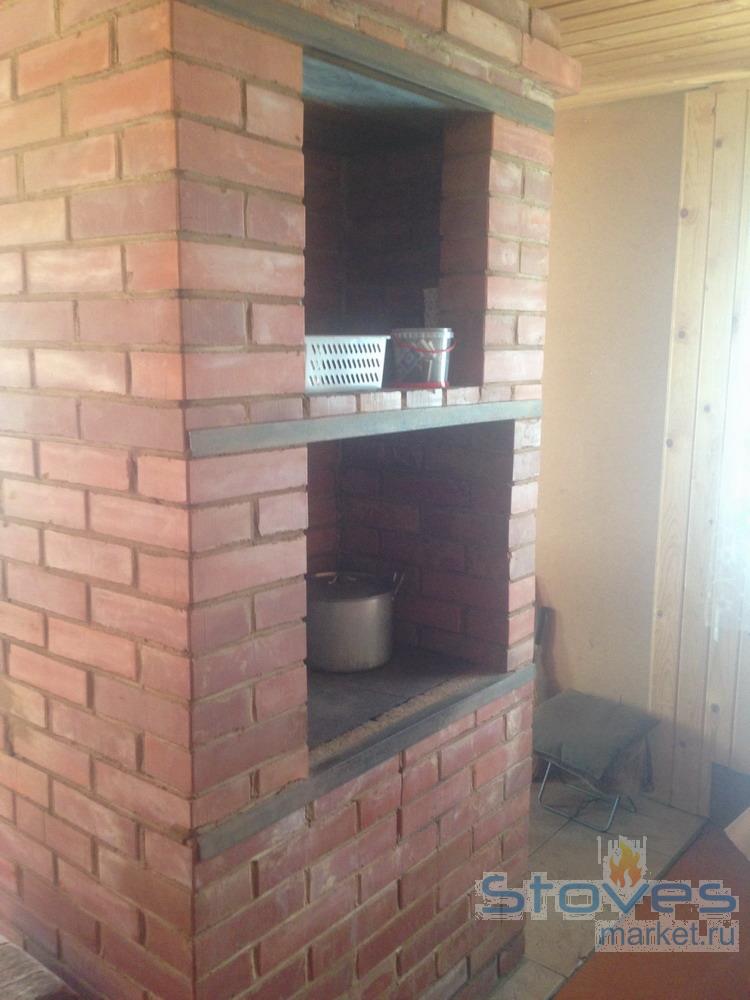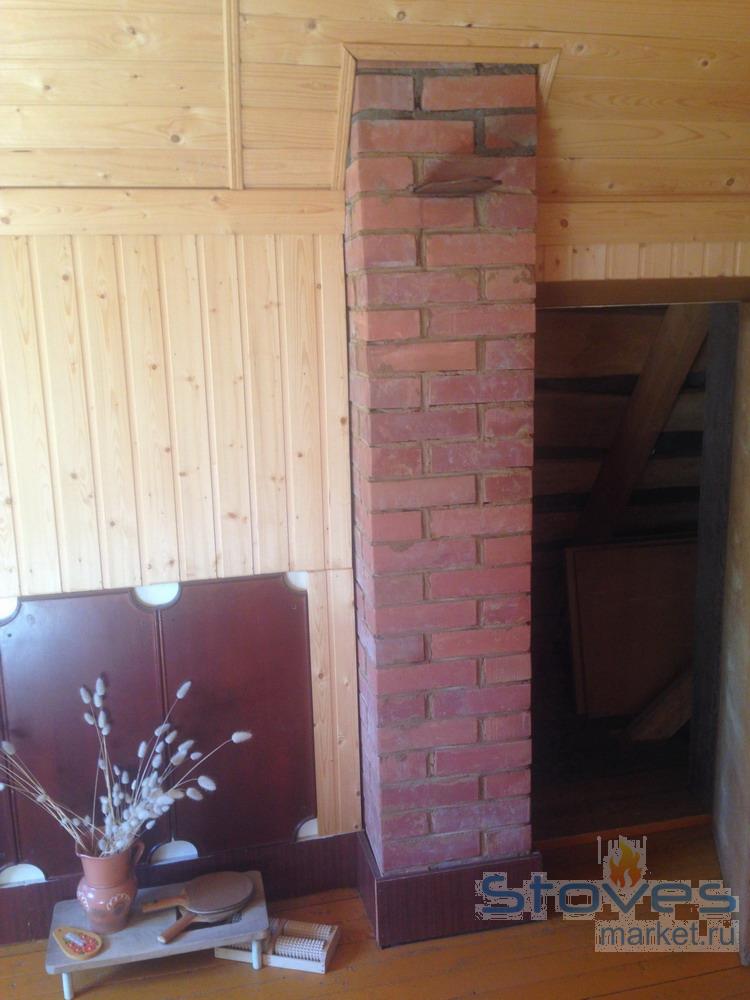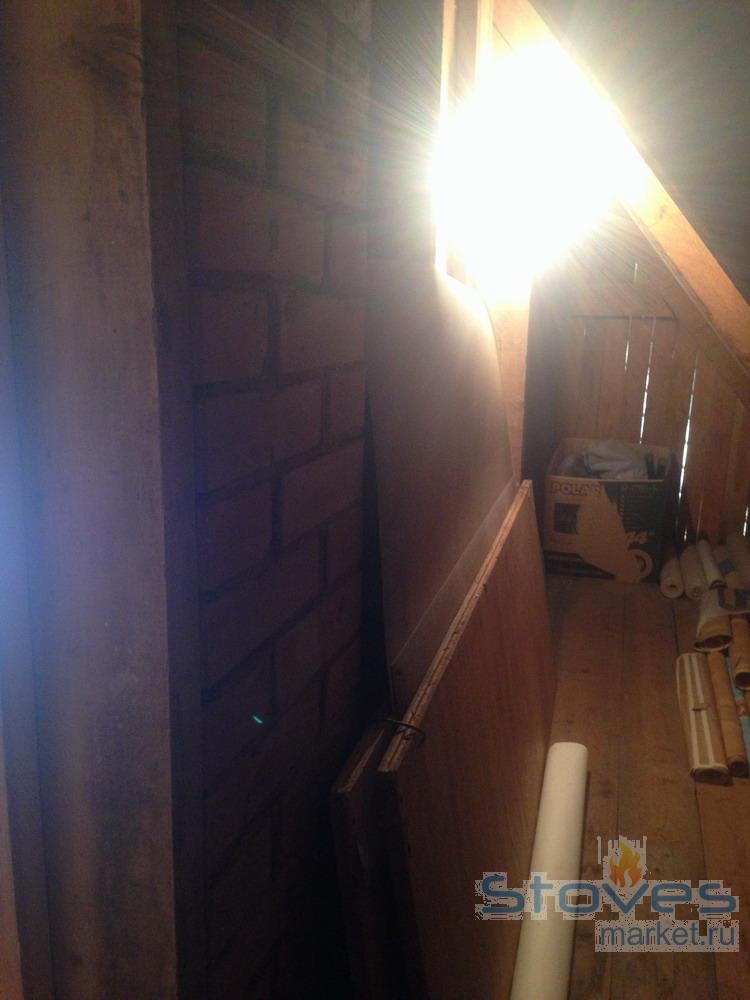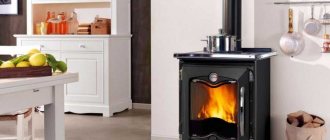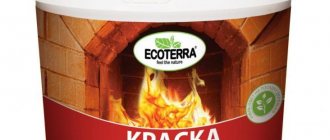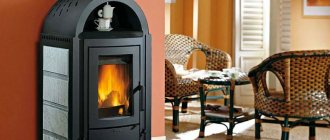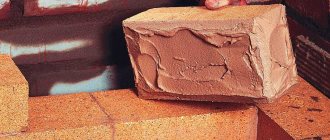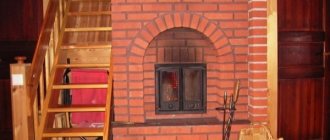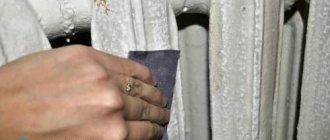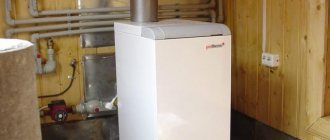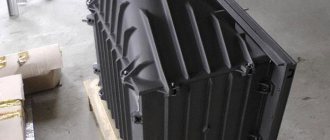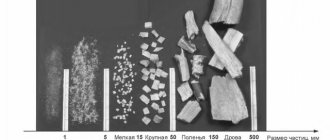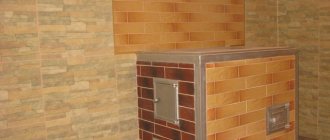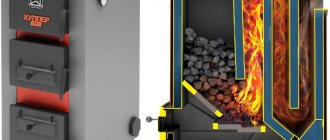- 1 of 1
On the picture:
In terms of size, masonry ovens are almost always superior to factory-made metal ovens.
Gas heating is not possible in every country house. And often you have to choose between heating with electric heaters, boilers with imported fuel (liquid, solid) or stoves. But even if the choice is made in favor of stove heating, it is not clear which type of device should be preferred: a masonry (brick oven) or a ready-made (metal) stove?
There is no definite answer to this question. Each design has its own advantages and disadvantages. Therefore, you should proceed from what heating capabilities are required in your particular case.
On three sides.
The rule "only heats his room well" applies equally to both the finished and the brick oven. But the construction of a brick oven is usually built into interior partitions. Moreover, they try to do so that its facade and side walls go out into three rooms. And with the right design, the masonry stove gives off heat evenly to all three rooms.
Pictured: A stove built by the Masonry Heaters.
Heated area
It must be admitted that both a brick stove and a metal stove are not the most effective means of heating houses with an area of more than 60 m² (with a ceiling height of up to 3 m). Practice shows that the stove will "cope" with such a volume of air only during the off-season. It is difficult to achieve a comfortable temperature throughout the house when the outside temperature is -10 ° C. Or it is necessary to install several stoves in different parts of the house.
Do not be fooled by the advertising promises of some metal ovens. Statements that the stove is capable of heating 100 m² or more imply a single room not divided by partitions into rooms. A metal stove - a potbelly stove or a fireplace stove - successfully heats only the room in which it is installed. Special convection heating ovens are able to heat several communicating rooms, but the temperature between the room in which the oven is installed and the adjacent one will vary greatly.
- 1 of 1
On the picture:
The scheme of heating several rooms with one stove.
Construction safety
Violation of the technology of the stove masonry at any stage of construction can lead to danger when using the firebox. The main mistake can be the wrong foundation.
The main signs of malfunctions that arise with an incorrectly laid foundation:
- The vault of the firebox collapses.
- Doors fall out.
- Burning coal is poured out.
- The brickwork is cracking through and through over the entire area of the oven.
- Chimneys become unusable.
It is impossible to heat the stove in this state - there is a high threat of fire and poisoning of people with flue gases. Damage caused by an unusable foundation cannot be repaired. We'll have to disassemble the entire oven and rebuild all the elements.
Heating duration
In terms of the time that the stove is capable of giving off heat, models made of brick and stone are in the lead. A brick oven, for a long time (from 14 hours to a day), retains the accumulated heat, gradually giving it to the rooms. On average, from 1 m² of its surface area, 500 watts are released hourly. Thus, even in severe frosts, the brick oven is ignited a maximum of a couple of times a day.
The finished ovens are mostly made of metal. This material heats up easily, but also cools down just as quickly. The stove stops heating the room immediately after the last coals burn out in it.Manufacturers are struggling with this drawback: they either use internal inserts made of heat-consuming materials - the so-called heat accumulators, or provide a special slow combustion mode, when the wood barely smolders for several hours, keeping the furnace body warm. But, nevertheless, metal furnaces are not yet able to compare with a brick oven in terms of heating duration.
- 1 of 4
On the picture:
In modern metal fireplace stoves, in addition to open and closed fire modes, a slow combustion mode is often provided.
Imitation of a masonry oven.
Speaking of masonry stoves, we mean stoves made entirely of stone or brick. What you see in the photo is a finished stove lined with ceramic tiles. It does not require as complex construction as a masonry stove requires.
In the photo: Ceramic oven 06 from the Gutbrod Keramik factory.
Brick or metal?
Anyone who, in one way or another, is going to solve the problem of heating a house or a bath, which is becoming more widespread, needs to be sorted out in the stove issue. The oven market offers a large assortment. So what to choose brick or metal? Consider the pros and cons.
- The brick oven can be folded for you the way you want it to be. Metal ovens are usually bought ready-made, although they can be made to order.
- The brick kiln has a large mass, i.e. stores a lot of heat. It is enough to heat it once or twice a day so that the house is warm around the clock. Brick ovens give off heat with their outer surface, its average temperature does not exceed 65-70 ° C, sometimes it is maximally heated up to 90 ° C. Due to its high heat capacity, bricks transfer heat much longer than a metal furnace.
- Efficiency (Coefficient of Effectiveness) in brick ovens reaches 90%, in some parts of the region the main and perhaps the only source of fuel is wood or coal. In brick ovens, a large percentage of efficiency is achieved due to convective channels (smoke flows or hoods - after firing smoke passing through them transfers part of the heat to the brick). In metal stoves, firewood flies into the chimney (the effect of a fireplace - it heats up while it is heating).
· The stove is the heart of the house. A brick oven is warm, kind (do not burn yourself), while the metal is sometimes hot, sometimes cold. In prefabricated block fireplaces with metal inserts and metal stoves, heat transfer to air mainly occurs in internal cavities from metal surfaces heated to significantly high temperatures. On a metal surface, due to the high temperature, much more than on a brick surface, organic dust sublimes and settles, and more ions harmful to human health are formed.
· On a brick oven and a brick pipe. Such a pipe does not get very hot, while a hot metal pipe in the attic is out of place (you can, of course, run a metal pipe from the side of the house, but the draft is worse, there is a risk of clogging with soot, and it does not look like this). A brick pipe gives a little soft heat throughout the entire time (it almost does not heat up, but gives a little heat), while a metal pipe heats up a lot during the furnace, and then cools down quickly (I note that a two-layer metal pipe, i.e. a sandwich, at a price is comparable to the price of a brick, so in this paragraph I am talking about a single-layer pipe made of 1mm or 2mm steel).
· The metal burns out after a few years (maximum 10). A brick stove can also break, but in most cases, you yourself will be able to cover up non-dangerous (i.e., non-smoking) cracks with clay, or the stove-maker will repair the stove (in such cases, as a rule, the stove can be operated until the stove-maker arrives, observing a certain caution).A well-built brick oven, if properly operated, will not require repairs earlier than ten years later. The term of use of a brick oven is 50 years, or even more (with proper operation).
· You can heal with the oven. Heat has a beneficial effect on the human body. Fans of light steam know this firsthand. In Russia, for a long time, ailments were treated with the help of stove heat. Moreover, the stove perfectly warms up the body and, unlike the bath, is practically not contraindicated to anyone, and it is suitable for any age.
The heat of brickwork warms up not only the skin, but also muscles, bones, joints. With this exposure, the body temperature rises to 38.5 ° C, and pathogenic bacteria and viruses in the body die.
The most important thing is that with the sweat released from the body during warming up on the stove, substances such as fat, cholesterol, acids, etc. are removed in much larger quantities than during the bath procedure. This means that such sweating more effectively frees the body from toxins and toxins, accelerates metabolism, which has a beneficial effect on muscles and joints, curing cramps, arthritis, rheumatism, sciatica. And these are not all methods of treatment. The metal stove loses in this sense.
· Another indisputable plus - food cooked in a brick oven has no analogues. An example of this is the Russian stove.
They baked bread, brewed kvass and beer, dried food supplies on the oven. The food cooked in the Russian oven was distinguished by its excellent taste. This was facilitated by the shape of the dishes, temperature conditions and uniform heating from all sides. In the Russian oven, food was cooked in clay pots and iron pots. Both had a narrow neck, a small bottom and large convex sides. The narrow neck reduced evaporation and contact with air, thereby contributing to better retention of vitamins, nutrients and aromas. Food in the Russian oven was cooked almost without boiling due to the fact that the temperature in the oven gradually decreased, because the oven was first heated and then cooked in it. Thus, the food in the Russian oven was steamed more or, as they said before, languished. Therefore, porridge, pea soups, sauerkraut cabbage soup, etc. were especially tasty. The Russian stove, having served faithfully for at least 3000 years, has now been transformed into heating and cooking stoves (Swedish, mini Russian stove, hobs with an oven). It was replaced by gas and electric stoves, electric grills, microwave ovens, steam ovens. But the dishes cooked in them will not replace the taste and aroma of old Russian cuisine. And in the case of remoteness from the city, and in case of power outages, all modern appliances become useless, while a brick oven will feed and heat!
· New metal sauna stoves - Finnish and Russian - with which shops are now filled, make it possible to quickly heat the bath. But the minus of the metal is that it cools down quickly and, moreover, "eats" moisture. The bath is dry. Such a bath is bad in that it does not heat, but burns. And the desired effect in the steam room does not work. It is hard to breathe in it, the body burns, but does not warm up, you steam dry. That is why metal ovens are bricked. For sauna stoves, the amount of stones placed in a metal stove usually does not exceed 80kg. In addition, they are usually open, i.e. stones do not heat up properly. In a massive brick oven with an internal heater, you can put 300 kg or more stones, i.e. to achieve soft (light) and at the same time powerful (i.e. in sufficient quantity) steam.
In a sauna house, a heater stove (a brick sauna stove) can both warm up the steam room and maintain a comfortable temperature in the house in winter, while it is difficult to achieve such versatility from a metal stove.As a result, the metal stove is used as a temporary hut, or as a way to quickly warm up a small bathhouse, which is not very a pity. Sometimes you can't find a good stove-maker or you don't have enough time and / or funds to build a full-fledged stone stove. Another option - a person built himself a large 7 by 9 meter bath from a cylinder, installed a metal stove recommended by the company (a little more expensive than usual). At first it is good, but after 7 years the stove smokes when kindling, and the log, i.e. cylindrical, in places tore apart.
· Metal stoves are fire hazardous, according to the statistics of the Ministry of Emergency Situations, every 10 fire is caused by improper operation of such stoves.
Conclusion: thus, a brick stove is good for permanent residence (in a bathhouse it is necessary to start heating it at lunchtime, provided that it is already warm), and a metal one can warm up a steam room in 3 hours. On the other hand, a brick stove keeps heat for a long time - if you heat it twice a week, then the stove and the steam room do not have time to cool down to the end. There is also a compromise option: brick the metal stove.
Note that real steam can only be achieved in a good brick (closed) heater. No Russian and bourgeois metal stoves, regardless of the design and volume of the heater, stones, will not give the same soft, strong and at the same time pleasant heat.
Of the above, a metal stove has more disadvantages than a brick one, although a brick one also has some disadvantages. Here is some of them:
- the price of a brick oven is higher compared to a metal one;
- bulkiness - it is difficult to fit a brick oven in a small garden house measuring 3 × 3 m;
- a brick kiln cannot be installed without a foundation (a kiln of 1000 bricks weighs 4 tons).
Erection speed and cost
In these matters, the advantage remains on the side of the furnaces made in production. They are relatively lightweight and, in rare cases, require the construction of their own foundations. Factory furnaces are delivered ready-made: you only need to carry out fire-fighting work at the place of their installation, connect and isolate the chimney.
Brick stoves, taking into account the cost of the material and the work of the stove-maker, will cost more. The process of their construction is much more complicated, lengthy and messy. And often you need to think about building a brick oven at the time of building a house (after all, the structure is installed in partitions). Whereas a metal stove can be brought and installed in a finished structure.
Important points in choosing a stove for a country house and a summer residence.
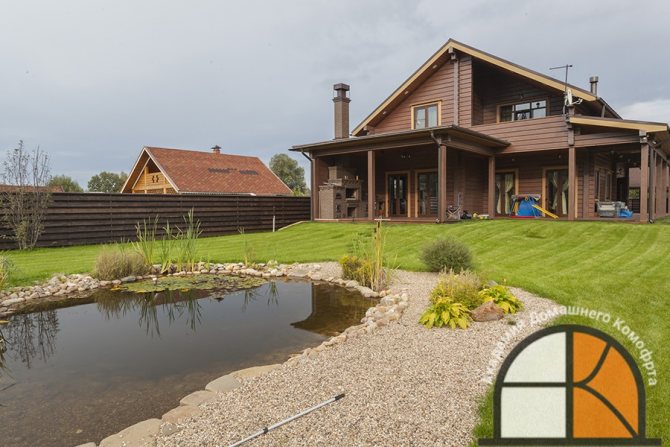
Summing up, we can summarize the main questions that need to be answered by the owner, who wanted to heat his country house or summer cottage.
The main choice is a brick or metal oven
The place where it is planned to make masonry or installation
Furnace shape and dimensions
How much volume is required to heat
What complex of tasks is to be solved with the help of the oven (heating, cooking)
Masonry and cladding material
Available fuels
What to choose for heating a country house?
Features of the
The bath ceremony is a traditional ritual used not only for relaxation, but also for health purposes. Cast iron is becoming increasingly popular as a stove material.
A cast iron stove for a bath differs from its predecessors in a number of advantages.
- High heat resistance, which is achieved due to the addition of chromium. An additional advantage is the ability to withstand sudden temperature changes.
- High level of heat capacity and low level of thermal conductivity. It is on the basis of these properties that the room will warm up quickly, but the accumulated heat will leave slowly (up to 9 hours).
- Heating equipment made of cast iron has thick walls that easily let heat through, but at the same time do not burn out from high temperatures.
- Subject to the installation technology, the cast iron stove is absolutely fireproof.
- Small dimensions allow placing equipment in a room of any parameters.
- To install such a furnace, no foundation is needed.
- For the smooth operation of heating equipment, a small amount of firewood is required.
- Environmental friendliness and safety of the material itself.
- There is no oxygen burnout during operation.
- The released steam is not only not harmful to humans, but also brings certain health benefits.
- Long service life if the device is used correctly.
A heating device made of cast iron is characterized by its versatility: it simultaneously heats both the air in the steam room and the water. The cast iron stove fits well into the interior of the bath and looks harmonious in a steam room with any design. Despite the fact that the stove is compact, it weighs quite a lot - about 60 kilograms.
Furnace cladding is selected exclusively from individual wishes and can be made from almost any material. For example, it can be overlaid with bricks or tiles, or it can not be exposed to additional external cladding. Facing may be required if an unscrupulous manufacturer has saved on the quality of the material being produced. Low-quality cast iron is capable of cracking during operation. To avoid such troubles, it is recommended to cover the heater.
For installation in a private house bath, you should choose stoves made of cast iron of the highest quality. You should not save money when buying a product, it is important to carefully study its chemical composition, so as not to encounter material deformation during use.
There are several main disadvantages of cast iron stoves.
- Even at the installation stage, it is necessary to provide for the construction of a full-fledged chimney, which is not a prerequisite for installing electric boilers.
- During operation, the elements of the furnace should be treated with increased accuracy, since the material is fragile.
- High cost in comparison with analogs made of steel.
- Do not cool the oven sharply, as the metal may crack.
The principles of operation for all models are almost the same, there are only small differences in the level of heat preservation and the heat transfer rate. For different types of ovens, these indicators differ depending on the characteristics.
And our steel stove is decorated. And between the decor and the firebox there is an air channel. As the furnace heats up, the air in the channel begins to rise upward, and cold air begins to flow in its place from below. This is the transfer of heat, called convection. As the furnace heats up, the air movement increases.
And the longer and warmer this air channel, the faster the air movement in it. This gives us a more intense mixing of the air. The advantage is faster heating and more uniform temperature. And the minus is the dehumidification of the air - it heats up first of all, and only then all other objects.

